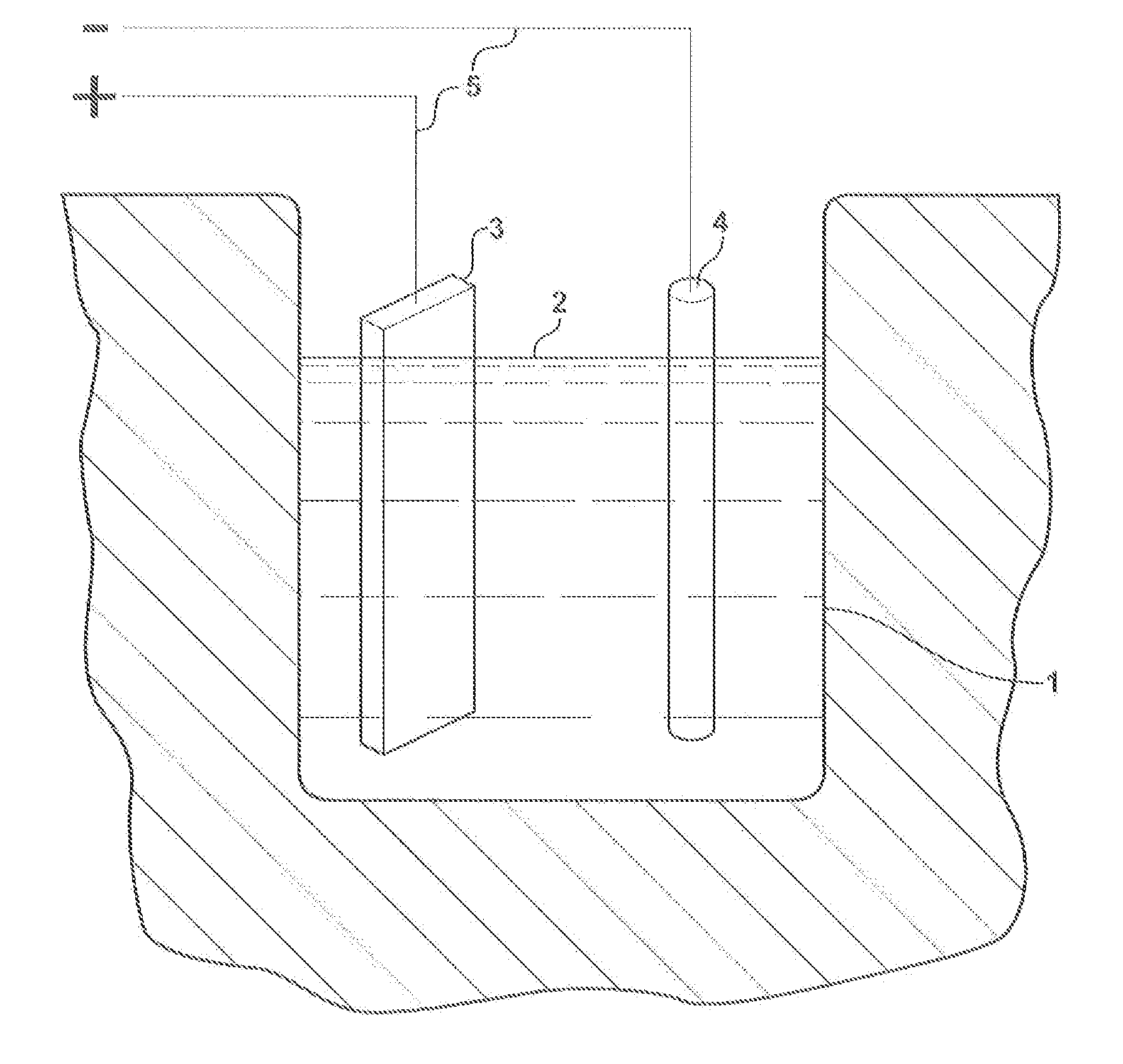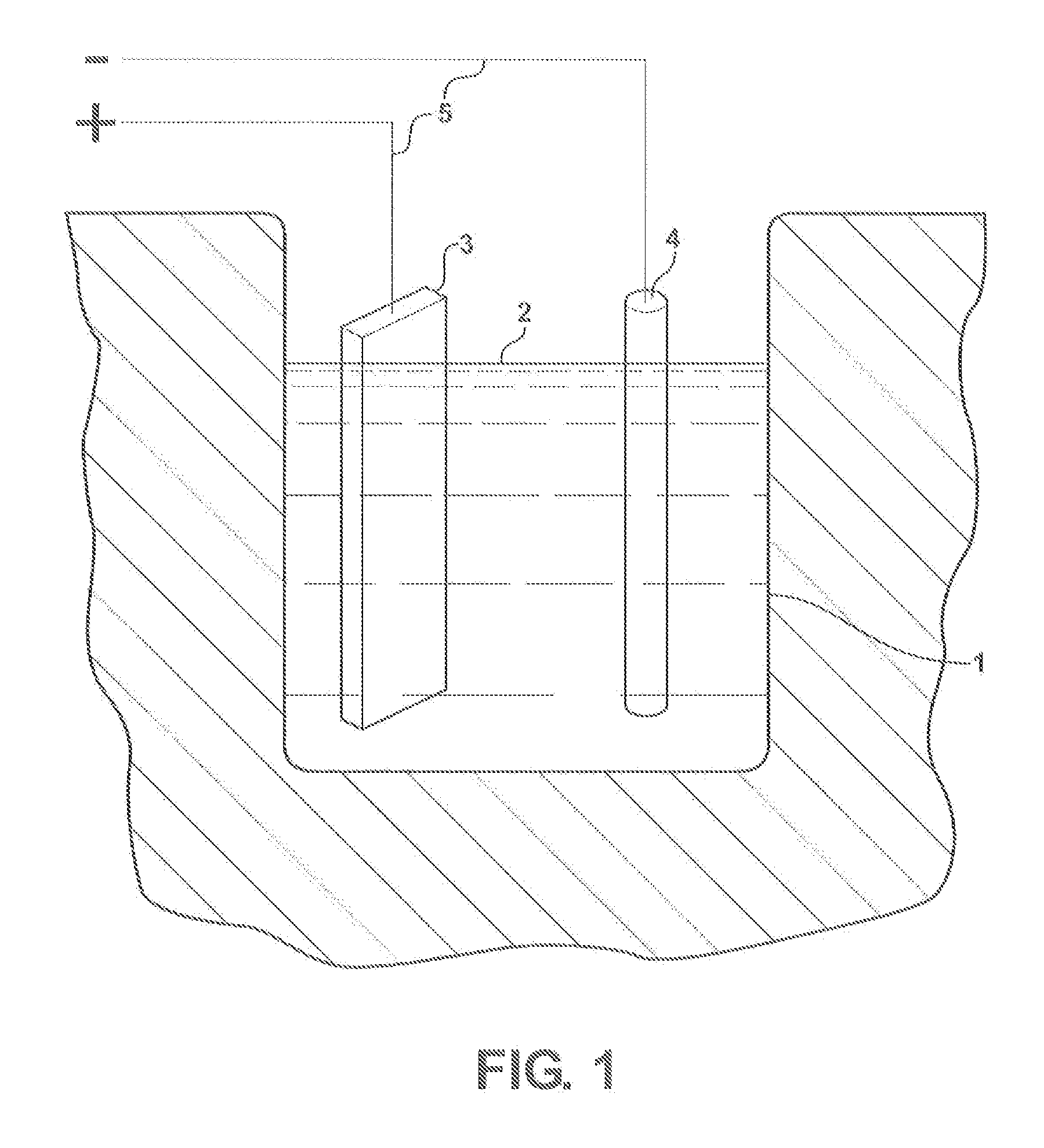Lead-palladium battery
a technology of lead-palladium battery and lead-acid battery, which is applied in the field of storage batteries, can solve the problems of high corrosion, low energy density of the battery, and high corrosion of the electrolyte and sulfuric acid
- Summary
- Abstract
- Description
- Claims
- Application Information
AI Technical Summary
Problems solved by technology
Method used
Image
Examples
Embodiment Construction
[0008]The electrochemistry of the present invention is best explained by the reactions that occur at the electrodes during cycling of the cell. In the special case where the electrolyte consists of an aqueous solution of sodium sulfate, the following reactions take plate upon discharge.
At the positive electrode:
PbO2+Na2SO4+2H2O+2e−→PbSO4+2OH− (1)
and at the negative electrode:
2PdH→2Pd+2H++2e− (2)
where PbO2 is lead dioxide, Na2SO4 is sodium sulfate, H2O is water, e− is an electron, PbSO4 is lead sulfate, NaOH is sodium hydroxide, OH− is the hydroxyl ion, PdH is palladium hydride, Pd is palladium, and H+ is the hydrogen ion.
[0009]Upon charging the cell, the above reactions are reversed. Atomic hydrogen that is formed at the negative electrode is absorbed by the palladium. This metal has the unique capability of absorbing up to 900 times its own volume of hydrogen at room temperature. Whether the absorbed hydrogen is chemisorbed or forms a palladium hydride compound is not known for s...
PUM
 Login to View More
Login to View More Abstract
Description
Claims
Application Information
 Login to View More
Login to View More - R&D
- Intellectual Property
- Life Sciences
- Materials
- Tech Scout
- Unparalleled Data Quality
- Higher Quality Content
- 60% Fewer Hallucinations
Browse by: Latest US Patents, China's latest patents, Technical Efficacy Thesaurus, Application Domain, Technology Topic, Popular Technical Reports.
© 2025 PatSnap. All rights reserved.Legal|Privacy policy|Modern Slavery Act Transparency Statement|Sitemap|About US| Contact US: help@patsnap.com


